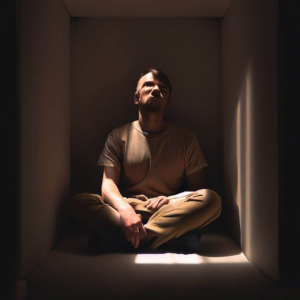Claustrophobia is classified as a mental disorder according to the diagnostic and statistical manual of mental disorders. It is characterized by the fear that is illogical because of being enclosed in a place and that you cannot escape. At times claustrophobia may cause anxiety or even panic attacks.
That said, it doesn’t appear illogical if you’re the one suffering from it.
Who are mostly affected by claustrophobia?
Research has shown that women are mostly affected and begins in minor years. Many of these women, as well as the other people who have claustrophobia, do not seek treatment.
Signs and symptoms of claustrophobia include:
 Palpitations
Palpitations- General weakness
- Shortness of breath
- Excessive sweating and chills
- The feeling of a tight chest
- Dizziness and syncope
Triggers of claustrophobia:
Overcrowded placesEntering a deep poolSeparation from close people, e.g. family membersIsolation as in quarantineGetting lostFlights
Flying claustrophobia
This is a common occurrence because in a plane there is the fear of being held in the aircraft for a long time as well as crashing (not helped by all those National Geographic programs). With this, it is imperative to identify the exact cause of the phobia and to work toward alleviating it. In response to this, you may find yourself avoiding flying completely or even try to work against that sense of fear. Also sitting on the last seat in a plane which is smaller or sitting in between people who look bigger than you doesn’t help – choose your seat ahead of time if you can.
How to manage claustrophobia in a plane:
Choose a comfortable seat
Seat with extra legroom and distance is best suited. You may also opt for a sit near a window to help you distract yourself by enjoying the outside view. A seat near the walkway also goes a long way in enhancing easy mobility, e.g. to the washrooms to array anxiety.
It’s worth paying a bit extra to choose your seat rather than let it happen randomly at check-in or boarding.
Pre-flight preparations
The day you are flying ensure the following: arrive early at the airport, this will help reduce the anxiety associated with the thought of missing your flight. Also, the stringent security checks which might cause stress are hopefully reduced – the queues might be shorter. The sight of a crowded airport helps you begin to acclimatize early enough. Maintain your composure; you also need to maintain proper blood glucose levels through access to the restaurants in the airport.
Board the flight!
Keep yourself busy by engaging in activities such as listening to your favorite music, watching a movie or some YouTube clips, walking around and maybe chatting with a friend. It is also crucial to let your seatmate know if you have any anxiety disorder and the type of medications you use.
Chooose your airline carefully
Try to avoid an airline that is not too cheap – budget airlines cut as many frills as they can to keep the price down. If your peace of mind is involved, decide whether that’s worth paying extra for.
OK, not every route has alternative airlines but there could be a choice of airports which could give you a choice of carriers.
The route of the flight
Planes follow paths that are frequented by tourists and holidaymakers and therefore more likely to be crowded during the weekends. With your knowledge of the route, it is easier to make decisions on the right path. Maybe you can decide to fly on weekends to business destinations when there is less congestion. People have different fears, and for some, a full aircraft brings about that fear – crashing, social anxiety with too many people around, cramped seating, noisy kids.
You may also be able to get a prescription of antidepressants or anti-anxiety medications from your doctor to alleviate the symptoms. This medication is taken before the flight as well as in the case of the attack happening in the course of the plane.
Learn and practice deep breathing exercises in case shortness of breath occurs – this commonly happens before the onset of the attack. You should learn the deep breathing exercises days or weeks before your flight.
If the attack occurs, keep as calm as possible and be aware that the attack is a sign of fear and panic and that it will go away with time. Even if that time seems to be taking forever.
Exposure to claustrophobia also goes a long way in ensuring that you experience the dreaded situation and see in the end that it caused no harm. This reduces fear and anxiety when you are again faced with the real situation.
Watch other people go through claustrophobia in videos helps build confidence, especially in people who kept confident. The next time you can mimic the same confidence.
Look through articles on claustrophobia. They will help you find out how other people have dealt with it and the possibility of being treated.
Be confident in changing your thoughts and you can gradually wean yourself off those nasty thoughts.






